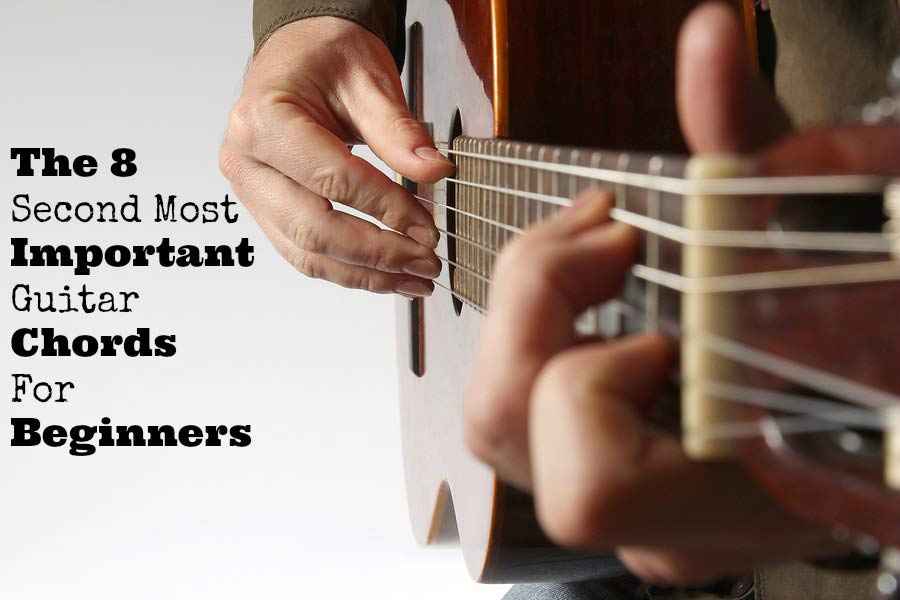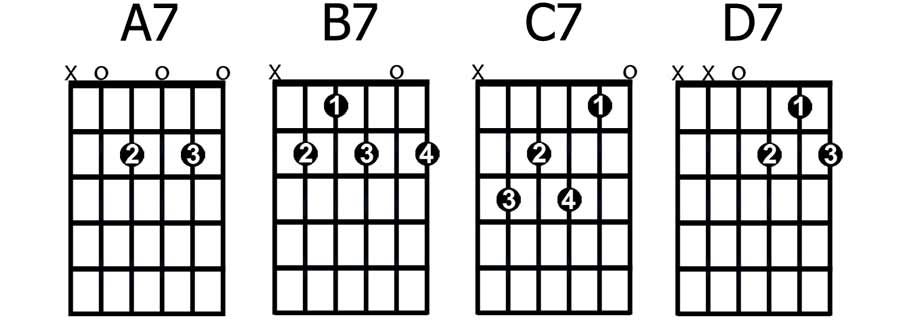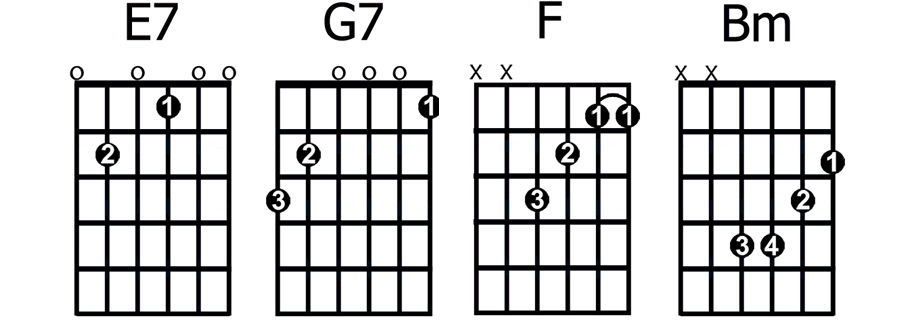September 4, 2023 by Klaus Crow

I noticed that a lot of beginner guitar players appreciate the easy step by step approach of learning new chords. That’s why I decided to chop things up a bit into a series of easy to follow chord posts, so you don’t get overwhelmed by the infinite amount of chords that are spread around the internet.
In one of the previous post I showed you The 8 Most Important Open Chords For Beginners. Today I show you “The Second 8 Most Important Chords For Beginners”. This way you can expand your chord vocabulary in the appropriate order that works best for learning new beginner songs and expanding your beginner path.
In Part I we learned the C, A, G, E, D, Dm, Am and Em chords. Today we learn the A7, B7, C7, D7, E7 and G7 chords. We call these dominant 7th chords (dom7). They are often used in pop music and essential chords in blues music. Also the F chord and Bm chord are a great follow up and common chords in every style of music.
Note: The F chord is played with your index finger barring two strings on the first fret. This is a bit tricky in the beginning, but with daily practice you will definitely get there.
The 8 Second Most Important Guitar Chords For Beginners
The numbers on the dots in the chord diagrams below indicate the finger positioning:
1 = index finger, 2 = middle finger, 3 = ring finger, 4 = pinky
The “x” on top of the diagram means you “mute” that particular string. “O” means an open string.
Study how to read a chord diagram if you’re just starting out.


As I always mention, the best way to learn and memorize chords is to learn songs that use these chords. Check out some easy to play blues songs or progressions for the 7th chords. The F and Bm chords show up in countless pop, rock and country songs.
Tips:
– Press the strings with the very tips of your fingers.
– Bend all three knuckles.
– press the strings hard enough.
– If you press a string make sure your finger isn’t touching and muting the string below.
– Make sure your fingers are as close to the fret as possible.
– Check each string to see if all the notes sound clean and clear.
– For barring the strings, press your index finger firmly down on the strings and make sure your thumb is right behind the neck to give it enough support. Alter the positioning of your index finger slightly up or down to see if you can fix some of the buzzes and mutes.
– Learn to switch between every chord you’ve learned until now.
– Practice your chords daily.
– Learn chord songs.
Enjoy your new expanded chord vocabulary!
Great lesson! My favourite chords are the minor 7th chords. They add a unique voice to the songs. Great job!
Hi Ginnie,
Absolutely love minor7th chords. I also did a post on 7th chords, which includes the minor 7th. https://www.guitarhabits.com/how-to-play-the-most-common-types-of-7th-chords/
Thanks for your comment.
Best regards,
Klaus Crow
LOVED IT SO FAR !!!!!!!!!!!!!!!!!!!!!
Great article.
Hey! Awesome lesson write up. The only thing I’d ask for is maybe some suggestions at the bottom of the lesson of songs you’d recommend to learn.
The dominant 7th chords sounds so bright and full. Loved it !